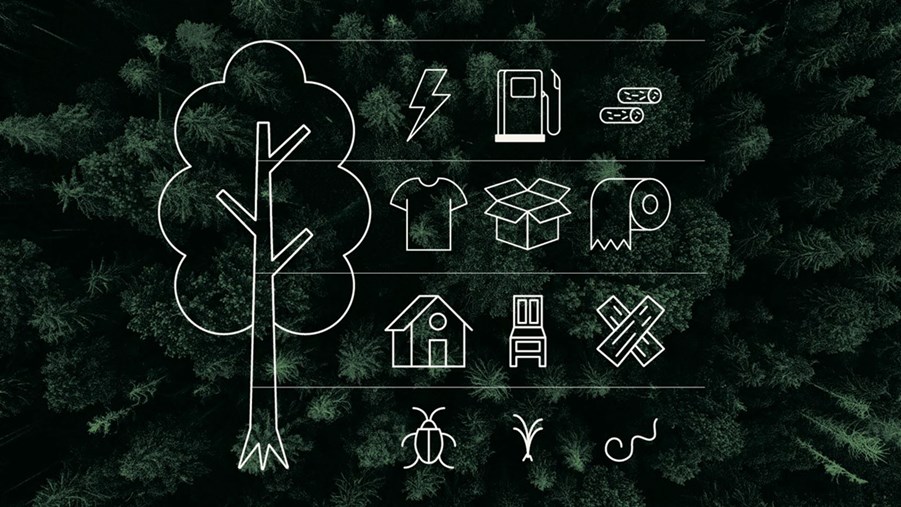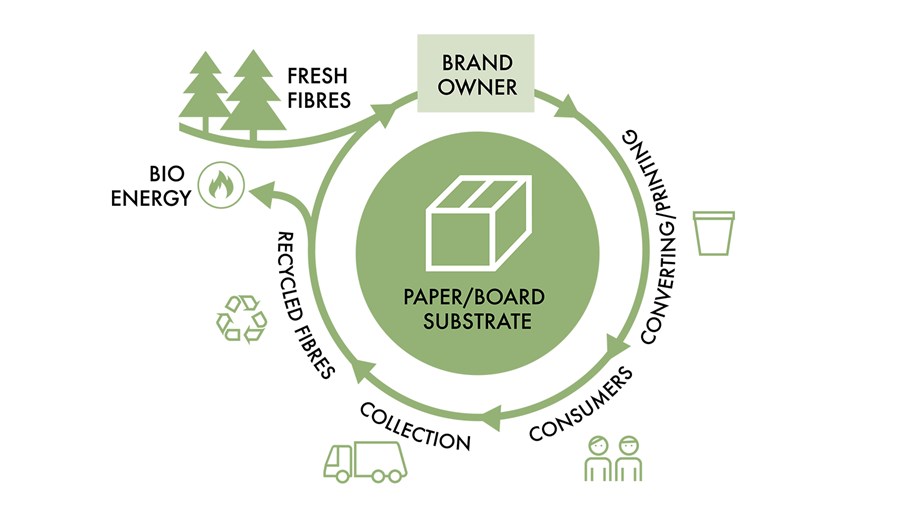
Forest-based products are part of a natural, circular ecocycle that begins and ends with photosynthesis. Active forest management and the products from the forest create the conditions for a closed loop that absorbs, binds and sequesters carbon dioxide.
How the Swedish forest sector's circularity works:
- Photosynthesis
Growing trees convert sunlight, carbon dioxide in the air, and water in the soil into wood. Through photosynthesis, carbon dioxide is sequestered as carbon in growing plants. - Forests
Trees are harvested when they are fully grown. After felling, new seedlings are planted. - Production
Harvested trees are made into products – such as timber for houses and furniture, or cardboard, paper or textiles. These products continue to store the carbon sequestered by the trees as they were growing. - Innovation
Products and processes to increase resource efficiency and degree of processing are being continuously developed. - Recycling and reuse
Fibre can be reused many times. Fibre-based packaging has a high recycling rate, and there is growing interest in reusing more wood-based building materials. - Bioenergy
When wood fibre has reached the end of its useful life, it can be utilised along with other forest industry residues to produce bioenergy for heating. This process releases biogenic carbon dioxide, which is absorbed by growing trees through photosynthesis. The circle is now complete.



